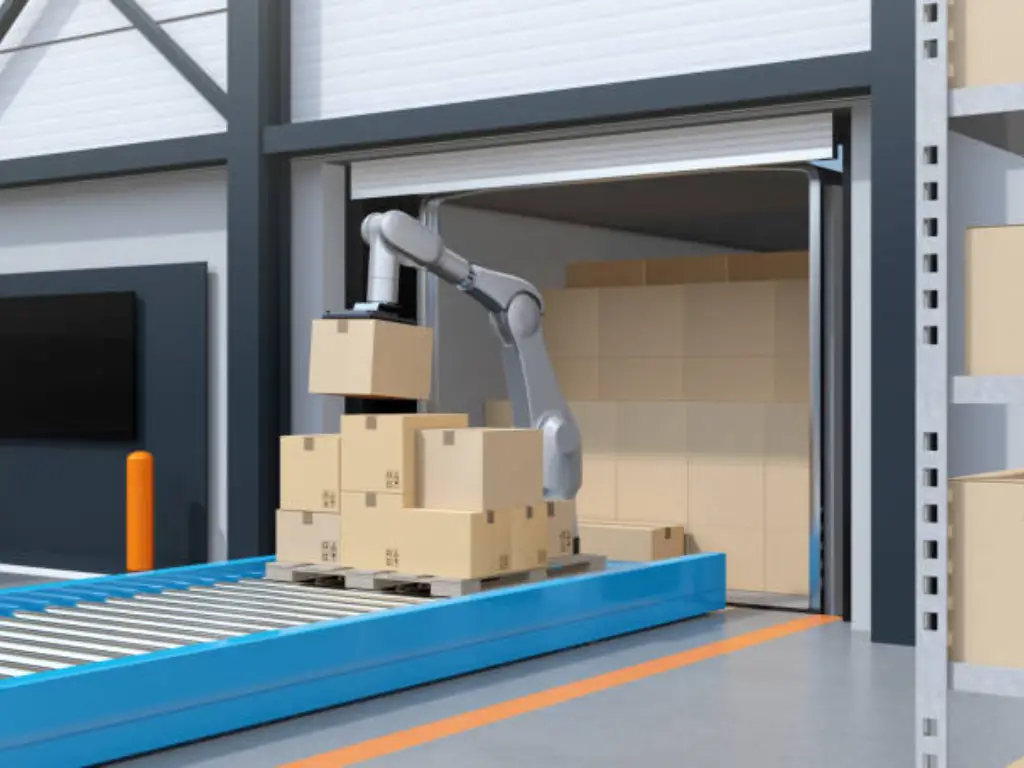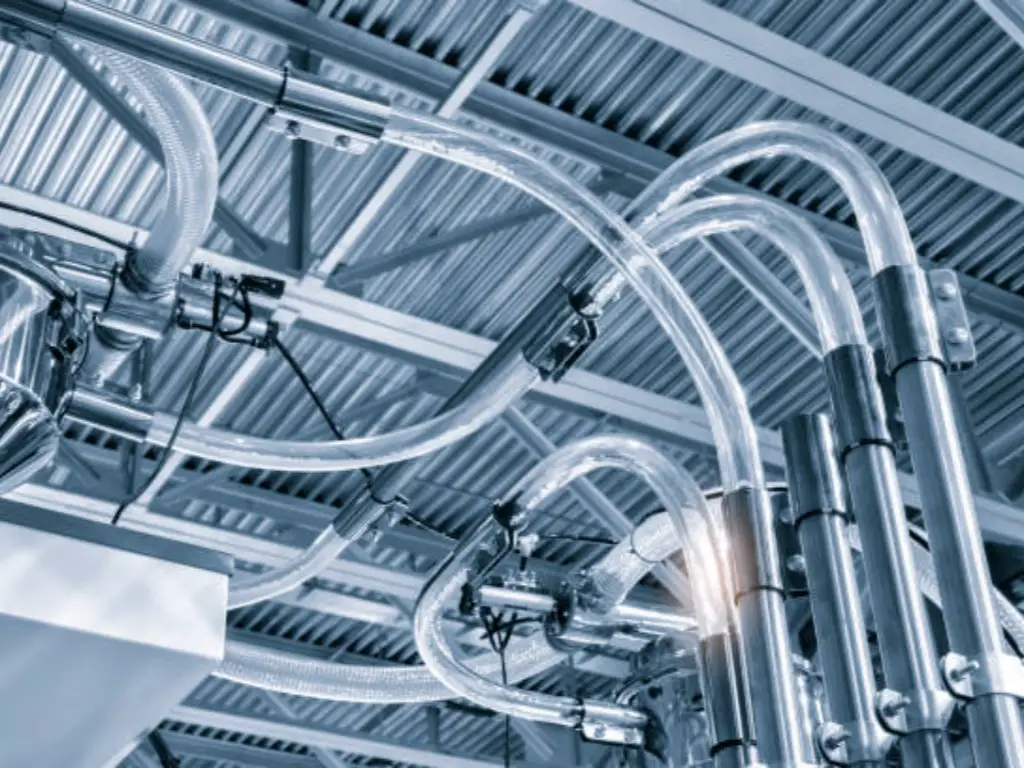Introduction: Meeting Modern Demands in a Competitive World
Every day, your facility faces a torrent of demands: customers expect faster fulfillment, markets demand flawless product quality, and the bottom line requires ever-increasing efficiency. Compounding this is a persistent labor shortage that makes scaling with manual processes not just difficult, but financially unsustainable. You find your team stretched thin, your production line straining at the seams, and your capacity struggling to keep pace with ambition. It’s a familiar story in modern manufacturing and logistics, a challenge that can feel insurmountable.
But what if the solution wasn’t about simply working harder, but working smarter? What if you could turn your packaging operations from a potential bottleneck into a strategic asset? This is the promise of packaging automation. It’s more than a trend; it’s a fundamental shift in how the packaging industry is dealing with the critical final stages of production. This article will serve as your comprehensive guide. We will delve into what packaging automation truly is, explore its three core stages, and unpack the tangible advantages it brings. We will also look at the most important processes that can be automated and unveil the powerhouse elements that make it all possible, ultimately providing you with a clear roadmap to start your own transformation.
What Exactly is Packaging Automation?
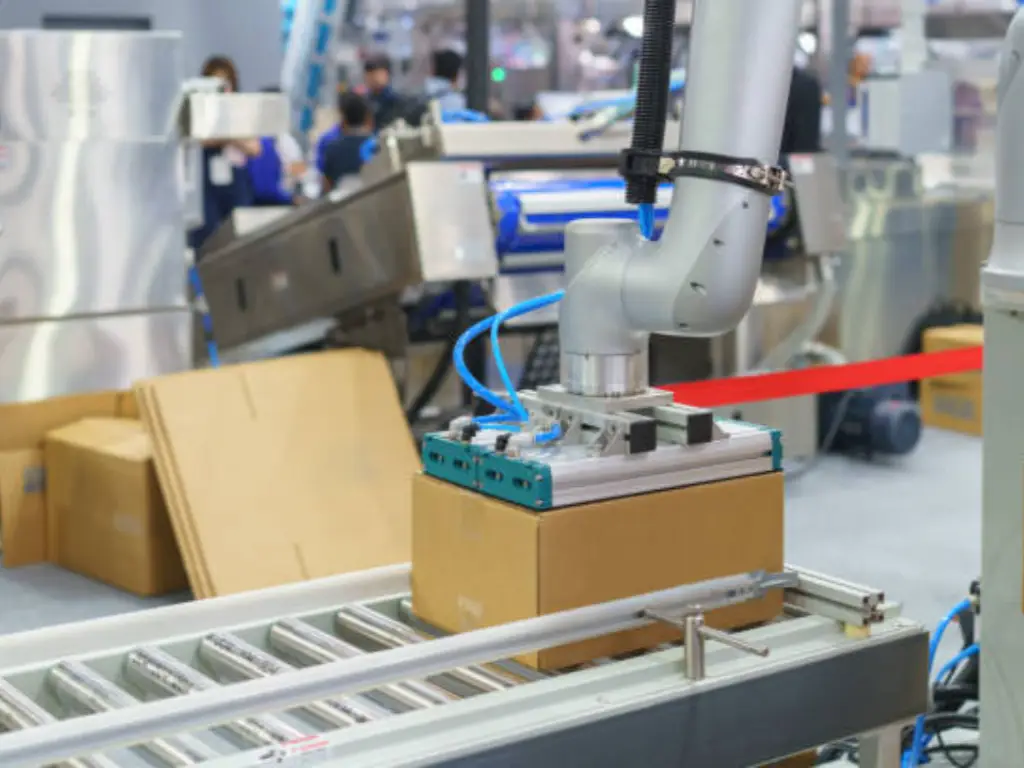
At its core, packaging automation is the use of technology, machinery, robotics, and integrated control systems to perform tasks along a packaging line with minimal human intervention. The primary objective is to replace or assist in repetitive tasks that are laborious and demand high levels of consistency—from forming a box to palletizing it for shipment.
Many people hear “automation” and immediately picture a single, complex robot working in a cage. While robotics are a vital part, this view is incomplete. True packaging automation is not about a single machine; it’s an entire ecosystem of automation systems. Imagine it not as a soloist but as a very talented orchestra, with every machine and part being an instrument that performs a particular role. The conveyor systems, erectors, fillers, sealers, labelers, and palletizers all operate in perfect harmony, coordinated by a central control system (the PLC), to form a symphony of efficiency throughout the process. The outcome is a smooth, continuous flow that converts raw materials and finished products into shipment-ready goods.
Beyond a Single Machine: A Systems Approach
To comprehend the full scope of packaging systems, one has to view it as a spectrum. It is not an all-or-nothing proposition. This flexibility enables businesses of all sizes to identify the right level of automation and a viable entry point.
- Semi-Automated Systems: In this approach, machines are used to perform a certain, and usually laborious, portion of the process, but a human operator is still needed for loading, supervising, or transferring products between stages. A typical example is a semi-automatic case sealer. An employee manually packs the box and folds the flaps, then pushes it through a machine that automatically tapes the box. This targets a specific bottleneck without necessarily having to overhaul the entire line.
- Fully Automated Systems: This is the integrated “orchestra” we were referring to. In a fully automated line, the product is transferred between stations with no manual intervention. A box is then automatically assembled, transported to a filling station, filled, sealed, labeled, and then robotically stacked onto a pallet, which is then stretch-wrapped for shipping. This is the most efficient, fast, and consistent method, designed for high-volume operations where the reduction of human labor and the maximization of throughput are paramount.
Scalability is the beauty of the systems approach. A company can start with its most significant pain point, say palletizing, and then, as ROI is achieved and requirements change, can add upstream and downstream processes to create a more holistic automated solution over time.
The 3 Core Stages of Automated Packaging Explained
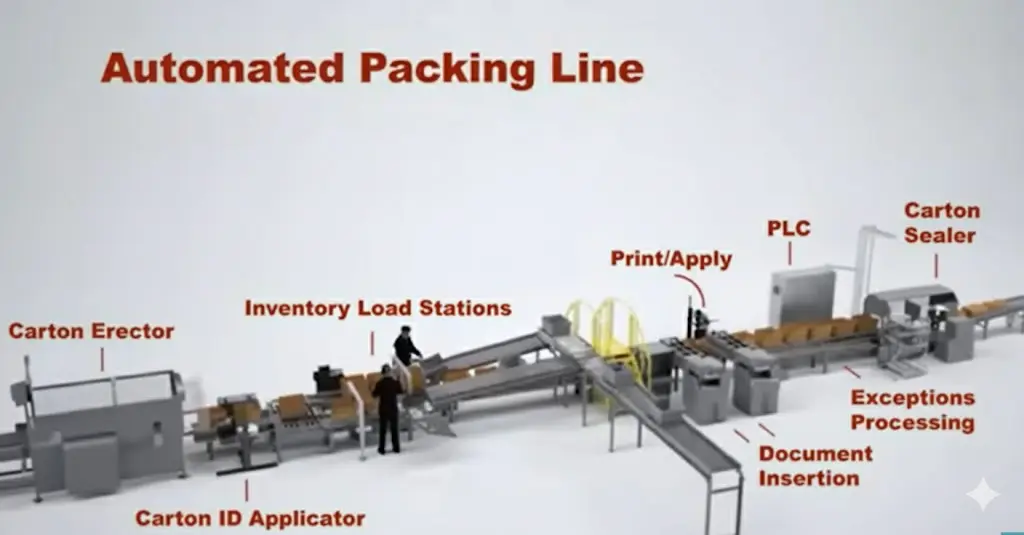
In order to successfully implement automation solutions, it is important to know the different phases of the packaging process. Each stage presents its own unique challenges and automation opportunities.
- Primary Packaging: This is the initial packaging that is in direct contact with the product. It is designed to safeguard, maintain, and hold the product. Hygiene, consistency, and speed are essential here, and automation is critical in the food andpharmaceutical industries.
- Examples: Pouring a drink into a bottle, closing a bag of chips, wrapping a chocolate bar, or putting a medical device into a sterile blister pack.
- Secondary Packaging: This is a step that entails combining several primary-packaged products. The aim is to package products in a way that makes them easier to handle, offer extra protective packaging, and develop the units that will be displayed on the shelf by the consumer or retailer (e.g., a case of beer). This stage is highly efficient with automation that enhances the preparation of goods for bulk distribution.
- Examples: Placing 12 bottles of soda in a cardboard box, shrink-wrapping a tray of canned goods, or wrapping several software boxes together.
- Tertiary Packaging: This is the last phase, concerned with the preparation of products for bulk product handling and shipping. The main role of tertiary packaging is to cushion the secondary packages during transportation and ensure that they are easy to transport and store. The purpose of automation here is to deal with heavy loads and provide pallet stability.
- Examples: Piling product cases onto a pallet (palletizing), wrapping the pallet to make it stable, and adding shipping labels to the completed load.
The Tangible Benefits: Why Automation is a Game-Changer for Production
Investing in automation is a significant decision, but the payoff is felt throughout the whole operation, making it one of the most effective upgrades a company can make. The advantages are not abstract; they are quantifiable benefits that directly affect your productivity, profitability, and competitive edge.
| Category | Description | Key Benefits |
| Huge Increase in Productivity and Throughput | An automated packaging system can operate 24/7 without rest or exhaustion, dramatically increasing production speed. A manual line may pack 10–15 boxes per minute, while an automated case packer can easily handle 30–40 or more. | Complete more orders, shorten lead times, and grow your business without increasing labor costs. |
| Major Decrease in Operational Costs | Although there is an initial investment, the long-term savings are significant. Workers can be reassigned from repetitive tasks to more value-added roles. Automation also reduces human error, minimizes product damage, and optimizes packaging material usage with precision. | Lower labor costs, reduce errors and waste, and improve resource utilization. |
| Relentless Quality and Consistency | Machines don’t fatigue or vary in performance. Every box is set squarely, every seal is pressed with the same force, and labels are applied uniformly. Built-in inspection systems ensure quality control and uniform presentation. | Enhanced brand presentation, consistent product protection, and higher customer satisfaction. |
| Improved Safety at Workplace | Automation removes workers from physically demanding, repetitive, and injury-prone tasks such as lifting and stacking. This significantly improves workplace safety. | Fewer injuries, reduced healthcare and compensation costs, and better employee well-being. |
| More Flexibility and Agility | Automated systems can quickly adapt to market changes—such as seasonal demand spikes or product size variations—with minimal downtime. | Faster response to demand shifts, increased production flexibility, and stronger competitiveness. |
Automation is no longer a luxury in the modern manufacturing environment, which is fast-paced and requires strategic needs. The combination of automated systems offers quantifiable benefits that go way beyond speed and efficiency to companies. Automation makes production a continuous, accurate, and dependable process that facilitates scalable growth and manages costs and enhances safety in the workplace. The long-term effect is tremendous: increased production, stable quality, satisfied workers, and a more stable operation that can adjust to change. Companies that adopt automation are not only in a position to satisfy the current needs but also dominate the future market. Simply put, automation does not merely alter the way you make things, it alters what your business can do.
Key Processes You Can Automate in Your Packaging Line
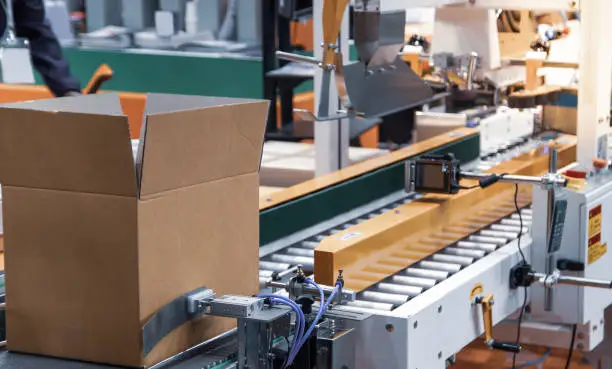
Automation may appear to be a long and difficult process, but the process of packing can begin with a focus on particular, high-impact processes. The following are some of the most popular and successful areas where you can introduce packaging machines into your line:
- Case Erecting: Manually forming a box from a flat piece of cardboard is time-consuming and subject to inconsistency. Automatic case erectors can pull a flat blank, square it, and tape or glue the bottom flaps, creating a perfect ready-to-pack case in a few seconds.
- Case Packing: This involves loading your products into the secondary case. This may be achieved through simple drop packers for sturdy products to complex robotic case packers for fragile or irregularly shaped items.
- Case Sealing: Once the case is packed, it must be sealed. An automatic case sealer offers a quicker, more consistent, and more professional appearance than manual taping, which keeps your products safe during transit.
- Labeling: Be it for branding, barcodes, or shipping details, labeling is very important. Automated labelers print labels on boxes, bottles, or pallets at the same point each time, removing errors and guaranteeing adherence to retailer or regulatory requirements.
- Palletizing: Manually stacking heavy boxes on a pallet is slow, ergonomically dangerous, and a frequent production bottleneck. A robotic or traditional palletizer is able to stack boxes in stable, accurate patterns at a rate and consistency that cannot be sustained by a human.
- Stretch Wrapping: The last step is to secure a completed pallet load. An automated stretch wrapper is able to apply film with a consistent tension and pre-stretch, which not only forms a more stable load, but also saves a lot of film usage as compared to manual wrapping.
The Powerhouse Components: How Reliable Automation Parts Drive the System
A sophisticated packaging automation system is an impressive sight, but its performance—its speed, reliability, and very existence—depends entirely on the quality of its underlying components. These systems don’t run on magic; they are powered by a network of high-precision parts that function as the heart, brain, and muscle of the entire operation. Smart sensors act as the system’s eyes, Programmable Logic Controllers (PLCs) serve as the brain, and motors and conveyors provide movement. But when it comes to the intricate, high speed actions of gripping, shifting, sorting, and placing, another hero emerges: pneumatics. The entire system is only as strong as its weakest link, which is why sourcing high-performance components is not a detail—it’s the foundation of success.
The Critical Role of High-Performance Pneumatics
- Maximize Uptime: Reliable Quality, Delivered Fast
- Simplify Sourcing: 3,000+ Models from One Partner
- Built to Last: Lower Your Maintenance & Replacement Costs
- Tailored Solutions to Win Your Market
At Hebai-Omch, we understand that in modern packaging automation, pneumatic technology is the heartbeat of every efficient production line. Our cylinders, valves, grippers, and vacuum generators enable the essential actions that drive automated systems — from grasping and lifting to positioning, clamping, and pressing. Each component is engineered for high speed and precise control, ensuring that packaging processes run seamlessly even under the most demanding production conditions. By integrating our pneumatic solutions, manufacturers can significantly accelerate their throughput, reduce human error, and elevate the consistency and quality of their packaging operations.
Our commitment to high performance and reliability is reflected in every product we deliver. Built to ISO 6431, ISO 13849, and ISO 61508 standards, our pneumatic components offerrobust durability, minimal maintenance requirements, and long service life — with cylinders capable of enduring up to 10 million cycles. This means less downtime, fewer maintenance interventions, and lower total cost of ownership for our customers. Moreover, features such as quiet operation, vibration minimization, and seamless OEM integration allow our solutions to blend effortlessly into existing systems, enhancing both efficiency and operational stability.
By choosing Hebai-Omch, our partners gain more than just reliable components — they gain a strategic advantage in their supply chain and production capabilities. Our pneumatics not only meet the immediate needs of rapid, precise, and safe packaging operations but also empower businesses to stay competitive in a fast-evolving market. Whether it’s optimizing assembly lines, streamlining material handling, or ensuring precise sealing and packaging, our high-performance pneumatic solutions deliver the speed, accuracy, and reliability that transform packaging automation into a driver of growth and profitability.
Real-World Applications Across Industries
The flexibility of custom packaging automation is why it is a useful strategy in a wide variety of industries, each with its own needs to handle a wide range of products:
| Industry | Key Priorities | Automation Benefits |
| Food and Beverage | Hygiene and speed | Automated packaging machines manage bagging of snacks, bottling of liquids, and casing of finished products in clean, high-speed conditions to guarantee product safety and shelf life. |
| E-commerce and Logistics | High volume and variability | Automated equipment creates correctly sized boxes on-demand, fills them with the right amount of void fill, applies shipping labels, and sorts packages, reducing shipping costs and enabling fulfillment of thousands of unique orders per day. |
| Pharmaceuticals and Medical Devices | Traceability, compliance, and precision | Automation ensures products are packed in sterile conditions, labeled properly for tracking, and handled delicately to maintain product integrity. |
| Consumer Goods | Shelf appeal and speed to market | Automation enables consistent, complex packaging designs, creation of retail-ready displays, and reduced presentation errors while maintaining brand standards. |
Finally, automation of custom packaging enables companies to increase efficiency, consistency, and product quality and minimize labor expenses and waste. With the further development of technology, automated solutions will be even more flexible, allowing companies in all industries to react to the needs of the market more quickly, become more sustainable, and provide a better customer experience.
Your First Steps Toward an Automated Future
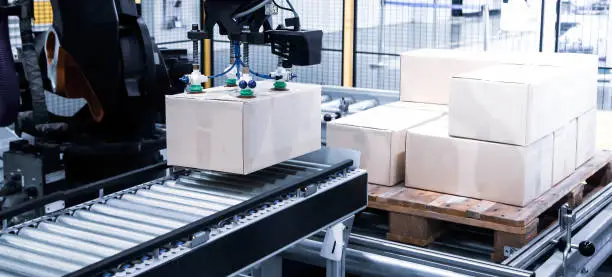
The journey to automation is a strategic undertaking and not a switch that can be flipped overnight. With a calculated and cautious approach to your packaging solutions, you will be able to have a successful implementation with the highest ROI.
- Audit Your Bottlenecks: Start by walking your own production floor to evaluate your current packaging processes. Where does work pile up? What tasks are most prone to error or injury? Use data to determine the one or two processes that are consuming the most of your efficiency. This is your starting point.
- Set Specific Goals (KPIs): What, in particular, do you want to accomplish? Don’t just aim to “be faster.” Have specific, quantifiable objectives, like, “Increase end-of-line throughput by 30 percent,” “Reduce packaging material waste by 15 percent,” or “Eliminate ergonomic injuries in the palletizing area.” Consider the type of product you handle and how automation can improve its journey.
- Begin with the Low-Hanging Fruit: You do not have to automate your whole line at once. Start with one, clearly defined project with a clear and relatively fast ROI, like an automatic case sealer or semi-automatic pallet wrapper. Success at an early stage will generate momentum and buy-in for subsequent projects.
- Find a Trustworthy Supplier of Components: The success of your automated equipment in the long run depends on the quality of its components. A wonderful system made of mediocre parts will ultimately turn out to be a mediocre system. Building a relationship with a supplier of high-performance parts guarantees you not only the correct components for each type of machine, but also the knowledge to choose them, combine them, and keep them in their optimum performance, thus minimizing the environmental impact of your operations.
Conclusion: Is Your Production Line Ready for the Next Leap?
The pressures of the modern market are not going to subside. The demand for greater speed, perfect quality, and lower labor costs will only intensify. In this environment, packaging automationceases to be a luxury and becomes a competitive necessity. It is the definitive answer to boosting your production line, transforming it into a faster, smarter, and more profitable operation.
From understanding the core stages of the packing process to identifying the key components that drive success, you now have a framework for evaluation. The question is no longer if you should automate it, but where should you begin. By taking a strategic first step, you can begin to unlock the immense potential waiting within your own facility.
If you are ready to explore how high-performance automation parts can be the engine of this transformation, our team of experts is here to help you engineer a more efficient and productive future.

